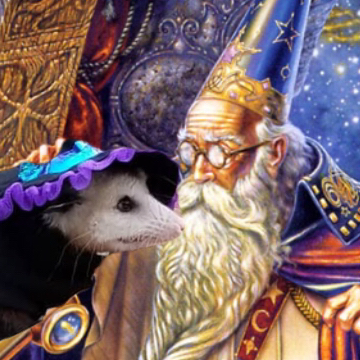The Little Dumbbell Nebula gets its name because it kinda looks like a tinier version of the Dumbbell Nebla M27 (yes, a different palette was used for this pic). It’s really tiny compared to the uncropped FOV. I’m a lot happier with this attempt at it, compared to my 2019 pic of M76 with the same equipment. I know It’s a bit out of season rn but I needed something to shoot at the start of the night. The nebulosity itself is false color, but the stars are true color RGB. Captured over 10 nights in Feb/Mar 2024 from a bortle 9 zone (I could only get a couple hours max per night on it.
Places where I host my other images:
-
TPO 6" F/4 Imaging Newtonian
-
Orion Sirius EQ-G
-
ZWO ASI1600MM-Pro
-
Skywatcher Quattro Coma Corrector
-
ZWO EFW 8x1.25"/31mm
-
Astronomik LRGB+CLS Filters- 31mm
-
Astrodon 31mm Ha 5nm, Oiii 3nm, Sii 5nm
-
Agena 50mm Deluxe Straight-Through Guide Scope
-
ZWO ASI-290mc for guiding
-
Moonlite Autofocuser
Acquisition: 21 hours 6 minutes (Camera at -15°C), NB exposures at unity gain and BB at half unity
-
Ha - 99x360"
-
Oiii - 83x360"
-
R - 101x60"
-
G - 100x60"
-
B - 99x60"
-
Darks- 30
-
Flats- 30 per filter
Capture Software:
- Captured using N.I.N.A. and PHD2 for guiding and dithering.
PixInsight Preprocessing:
-
BatchPreProcessing
-
StarAlignment
-
Blink
-
ImageIntegration per channel
-
DrizzleIntegration (2x, Var β=1.5)
-
Dynamic Crop
-
DynamicBackgroundExtraction
duplicated each image and removed stars via StarXterminator. Ran DBE with a shitload of points to generate background model. model subtracted from original pic using the following PixelMath (math courtesy of /u/jimmythechicken1)
$T * med(model) / model
Narrowband Linear:
-
Blur and NoiseXTerminator
-
StarXterminator to completely remove stars (to be later replaced by the RGB ones)
-
ArcsinhStretch to slightly stretch nonlinear
-
iHDR 2.0 script to stretch each channel the rest of the way.
This is a great new pixinsight script from Sketch on the discord. here’s the link to the repo if you want to add it to your own PI install.
RGB Linear:
-
ChannelCombination to combine monochrome R G and B frame into color image
-
SpectroPhotometricColorCalibration
-
BlurXTerminator for star sharpening
-
HSV Repair
-
StarXterminator to generate a stars-only image
-
ArcsinhStretch + HT to stretch nonlinear (to be combined with starless narrowband image later)
Nonlinear:
- PixelMath to combine stretched Ha and Oiii images into color image (/u/dreamsplease’s palette)
R = iif(Ha > .15, Ha, (Ha*.8)+(Oiii*.2))
G = iif(Ha > 0.5, 1-(1-Oiii)*(1-(Ha-0.5)), Oiii *(Ha+0.5))
B = iif(Oiii > .1, Oiii, (Ha*.3)+(Oiii*.2))
-
NoiseX again
-
Shitloads of Curve Transformations to adjust lightness, hues, contrast, saturation, etc
-
LocalHistogramEqualization
-
UnsharpMask
-
More curves
-
ColorSaturation to slightly desaturate the purples
-
even more curves
-
Pixelmath to add in the stretched RGB stars only image from earlier
This basically re-linearizes the two images, adds them together, and then stretches them back to before
(again, credit to Jimmy independent starless processing stuff)
mtf(.005,
mtf(.995,Stars)+
mtf(.995,Starless))
-
Couple final curves
-
DynamicCrop waaaay in on the nebula
-
Annotation
-

